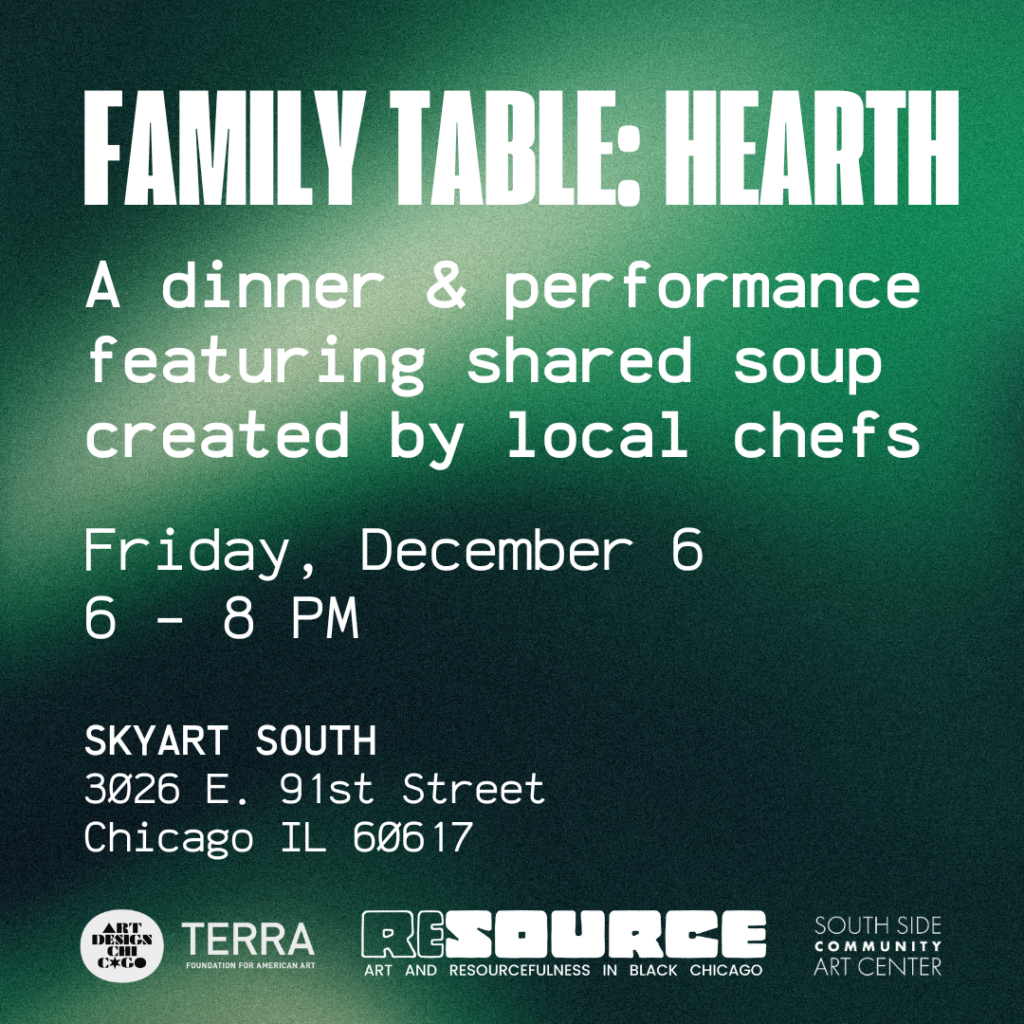Join SkyART for Family Table: Hearth, an interactive dinner and performance featuring a collaborative shared soup created by two local chefs. Each chef will blend their unique traditions and cultures to create a community pot of soup for guests. Soup, made from simple, often leftover ingredients, signifies resourcefulness and sustainability, transforming what might otherwise be wasted into a nourishing meal. Central to the exhibition is SkyART’s newly imagined mobile food cart, showcased as a medium, an artist’s studio, and an artwork. This series seeks to highlight themes of social justice and community reclamation, through the experience of both service and consumption.

This event has passed.
Family Table: Hearth
December 6
@
6:00 pm
-
8:00 pm


